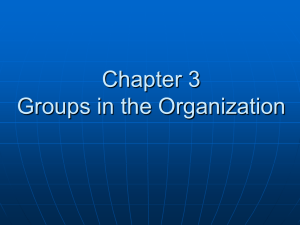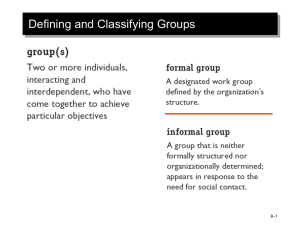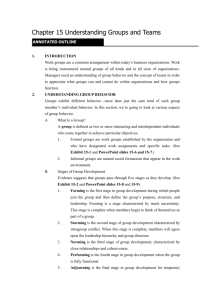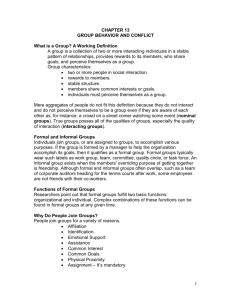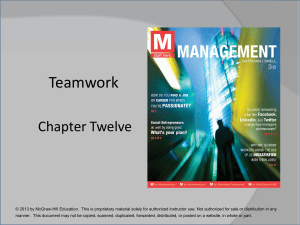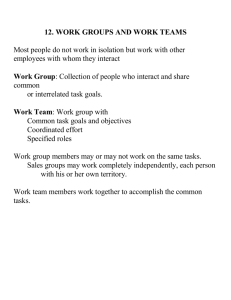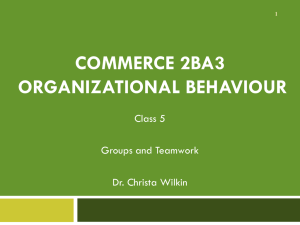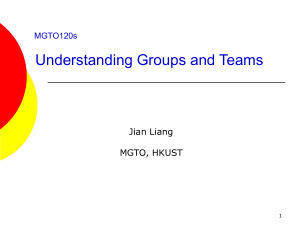here
advertisement
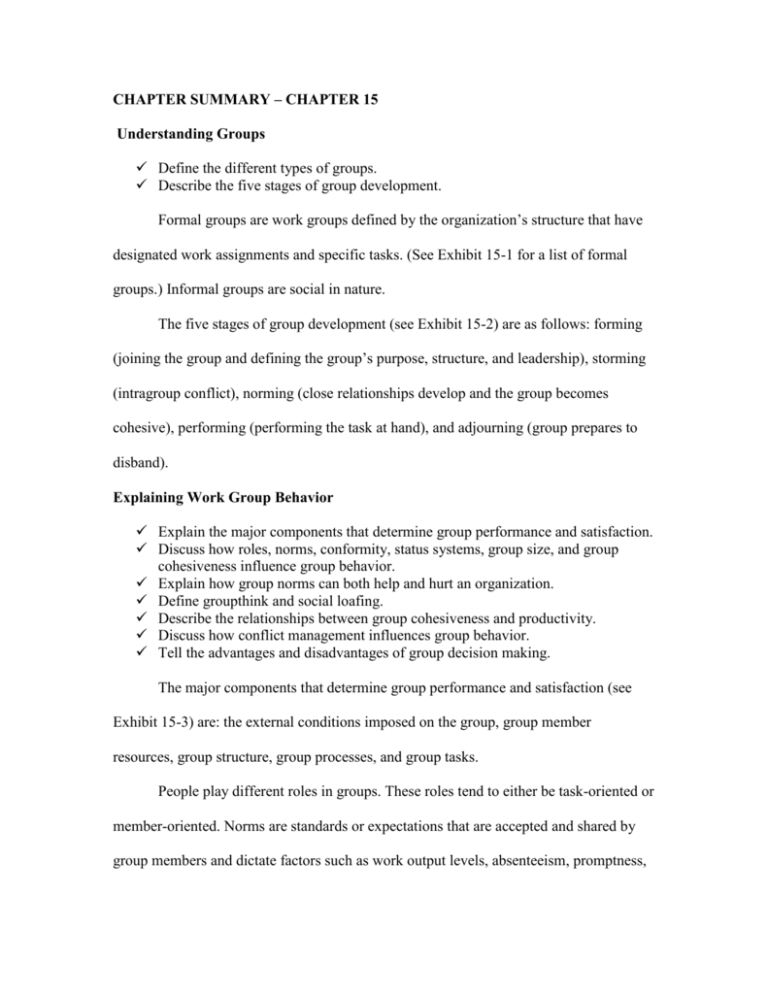
CHAPTER SUMMARY – CHAPTER 15 Understanding Groups Define the different types of groups. Describe the five stages of group development. Formal groups are work groups defined by the organization’s structure that have designated work assignments and specific tasks. (See Exhibit 15-1 for a list of formal groups.) Informal groups are social in nature. The five stages of group development (see Exhibit 15-2) are as follows: forming (joining the group and defining the group’s purpose, structure, and leadership), storming (intragroup conflict), norming (close relationships develop and the group becomes cohesive), performing (performing the task at hand), and adjourning (group prepares to disband). Explaining Work Group Behavior Explain the major components that determine group performance and satisfaction. Discuss how roles, norms, conformity, status systems, group size, and group cohesiveness influence group behavior. Explain how group norms can both help and hurt an organization. Define groupthink and social loafing. Describe the relationships between group cohesiveness and productivity. Discuss how conflict management influences group behavior. Tell the advantages and disadvantages of group decision making. The major components that determine group performance and satisfaction (see Exhibit 15-3) are: the external conditions imposed on the group, group member resources, group structure, group processes, and group tasks. People play different roles in groups. These roles tend to either be task-oriented or member-oriented. Norms are standards or expectations that are accepted and shared by group members and dictate factors such as work output levels, absenteeism, promptness, and amount of socializing on the job. Conformity is the pressure felt by members to behave according to the group. A group’s status system has to do with its grading, position, or ranking of certain people or positions within the group. Smaller groups are faster at completing tasks, but larger groups get better results. Group cohesiveness refers to the degree to which members are attracted to a group and share the group’s goals. Norms can help an organization because they can influence work expectations. However, that’s also the reason that norms can hurt an organization. Groupthink is when a group exerts extensive pressure on individuals to align their opinions to conform to others’ opinions. Social loafing is the tendency for an individual to expend less effort (loaf) when working in a group. When a highly cohesive group’s goals are aligned with organizational goals, it will experience a strong increase in productivity. However, if the group is not cohesive, it will experience only a moderate increase in productivity. If a highly cohesive group’s goals are not aligned with organizational goals, there’s a decrease in productivity. (See Exhibit 15-5.) Conflict is any perceived incompatible differences. Conflict and how it’s managed can influence group behavior. Relationship conflicts almost always are dysfunctional. Low levels of process conflict and low-to-moderate levels of task conflict can be functional. (See Exhibit 15-8.) When making decisions, groups tend to be more accurate and creative and have a higher degree of acceptance of the decision. However, groups are not as fast or efficient as individuals when making decisions. (See Exhibit 15-6.) Creating Effective Teams Compare groups and teams. Explain why teams have become so popular in organizations. Describe the four most common types of teams. List the characteristics of effective teams. Work teams are different from work groups. (See Exhibit 15-10.) Work groups interact primarily to share information and to make decisions that help each group member individually do his or her job more efficiently and effectively. Work teams work intensely on a specific, common goal using their positive synergy, individual and mutual accountability, and complementary skills. Teams have become popular because teams typically outperform individuals when the tasks being done require multiple skills, judgment, and experience. The four most common types of teams are problem-solving teams, self-managed teams, cross-functional teams, and virtual teams. Effective teams have the following characteristics: clear goals, relevant skills, mutual trust, unified commitment, good communication, negotiating skills, appropriate leadership, internal support, and external support. (See Exhibit 15-11.) Current Challenges in Managing Teams Discuss the challenges of managing global teams. Explain the role of informal (social) networks in managing teams. Global teams face challenges from: group member resources, group structure (conformity, status, social loafing, and cohesiveness), group processes, and the manager’s role. (See Exhibit 15-12.) Social networks describe the patterns of informal connections among individuals within teams. These informal social relationships can hinder or help the team’s effectiveness.
